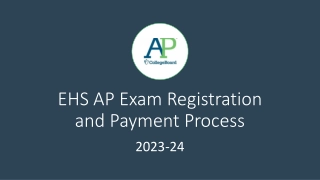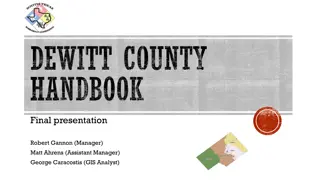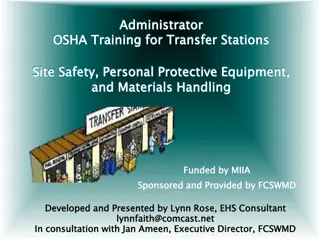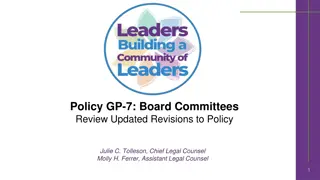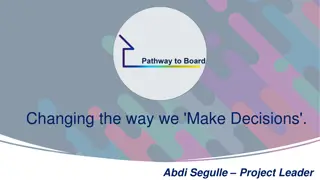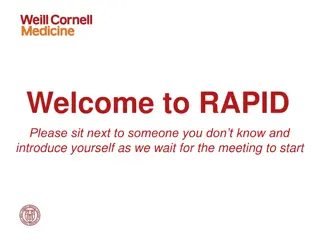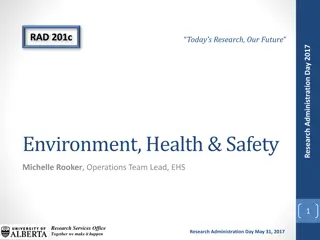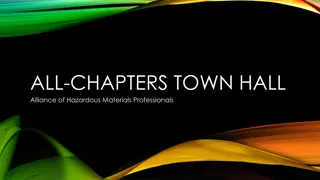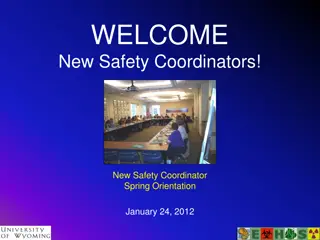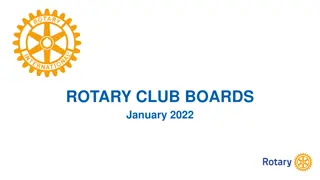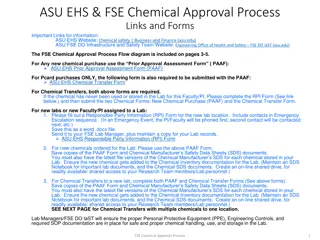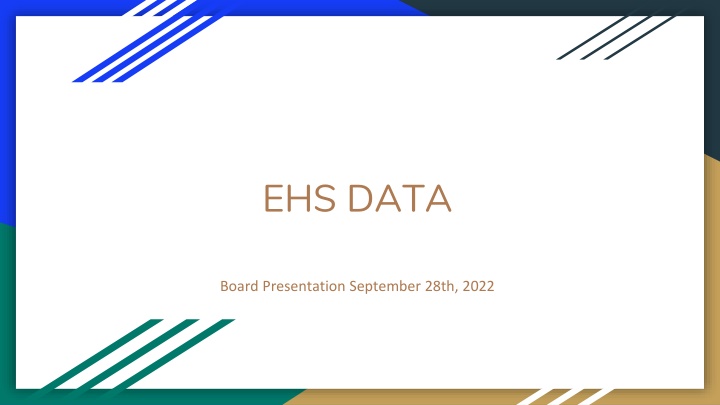
EHS Data Presentation Highlights and Insights
This presentation on EHS data from September 28th, 2022, covers various aspects including demographics, regular attendance, Smarter Balance Results, ninth-grade progress, failing grades, MAP growth analysis, and AP courses enrollment. Key points include the diversity among students, attendance rates, academic achievements, and future strategies for student success in terms of course enrollment and growth tracking.
Download Presentation

Please find below an Image/Link to download the presentation.
The content on the website is provided AS IS for your information and personal use only. It may not be sold, licensed, or shared on other websites without obtaining consent from the author. If you encounter any issues during the download, it is possible that the publisher has removed the file from their server.
You are allowed to download the files provided on this website for personal or commercial use, subject to the condition that they are used lawfully. All files are the property of their respective owners.
The content on the website is provided AS IS for your information and personal use only. It may not be sold, licensed, or shared on other websites without obtaining consent from the author.
E N D
Presentation Transcript
EHS DATA Board Presentation September 28th, 2022
Demographics at EHS 4.1% of EHS students are Multilingual Language Learners (MLL) 73.4% Caucasian, 19.8% Hispanic/Latino, 1.8% Asian, .8% African American 33.8% of EHS students are considered Low Income 17.1% of EHS students have a 504 or IEP
Ninth Grade On Track to Graduate Note- Does not include last year N
Percent Failing Grades 21-22 Semester 2 87% of EHS students had ZERO Failing grades 6.3% of students had one F 2.9% of students had two F s 1.5% of students had 3 F s 2.4% of students had 4 F s
MAP Growth & answers to board questions Math Growth - 7% Expected Growth 2.8% - More than double the expected growth ELA Growth - No Growth, Expected Growth 2.3% - Ninth Grade MAPS data is primarily individual and based off of growth, however trend data can be determined. We have a plan to share the 9th grade data with parents at conferences. The expectation is ALL 9th grade students attend. As of now we have not used NWEA resources when meeting with parents. Students can see their score immediately after they finish the test. They can see quickly where that score puts them in comparison to their peers (normed group). Our special services department uses the MAPS data heavily. Not very effective for all Tier 2 or Tier 3 because it is only 9th grade ELA and 9/10 Math. Student individual growth - Regular school attendance is crucial. Regular consistent reading, varied materials, effort in coursework, communication with teachers regarding needs/next steps. Regular consistent practice in math, monitor progress in Skyward, intervene when there is evidence of misunderstanding, regular attendance.
AP Courses and Enrollment AP English - 46 students AP Literature - 8 students AP United States History - 17 students AP Environmental Science - 10 students AP Calculus - 14 AP World History - 32 AP Physics - 10 students AP Psychology - 23 students AP Computer Science Principles - 30 AP Computer Science A - 10
AP Results from 21-22 AP English - 27 tested 33% earned a 3 or better AP Literature - 8 tested 100% passed AP United States History - 5 tested 80% passed AP Environmental Science - 12 tested 67% passed AP Calculus - 4 tested 50% passed AP World History - 29 tested 79% passed AP Physics - 8 tested 67% passed AP Psychology - 11 tested 73% passed AP Computer Science Principles - 22 tested 77% passed AP Computer Science A - 17 tested 71% passed
AP Questions Exam cost is $97 per test and is the responsibility of the student. In 21-22 98% of students passed their AP course 212 students enrolled in AP classes in 2021-2022 10% minority students 72% Females, 28% males
College in The High School Offerings and Enrollment Leadership - 11 students Pre-Calculus - 38 students AP Calculus - 14 students AP Physics - 10 students Spanish 3 and Spanish 4 - 13 students AP Environmental Science - 10 students Japanese 3 and Japanese 4 - 3 students Math in the Modern World - 8 students AP Language - 46 students AP Literature - 8 students These courses get high school credit and college credit. The AP courses also allow students the opportunity to test for an AP score. Not all AP courses are CiHS courses.
CTE Dual Credit Courses & Enrollment Ag Capstone - 26 students Ag Science - 74 students Ag Biology - 69 students Metals 1 and Metals 2 (must complete both courses) 70 students Natural Resources - 23 students Financial Fitness - 91 students Photography I and Photography II ( must complete both courses) - 101 students
Running Start Enrollment - Fall 2022 115 Students are enrolled in one or more courses at CWU 79 FTE The Legislature initiated the Running Start Program as a component of the 1990 parent and student Choice Act (Chapter 9, Laws of 1990, 1st Ex. Session, RCW 28A.600.300 to RCW 28A.600.400). Running Start provides students an opportunity to enroll at certain institutions of higher education and earn high school and college/university credit. Running Start is offered through Washington s 34 community and technical colleges and the following public, four-year universities: Washington State University Central Washington University Eastern Washington University Junior- and Senior-year students, as determined by the local public school district, charter school or tribal compact school, have a right granted by the Legislature to participate in Running Start. The exercise of that right is subject only to minimal eligibility and procedural requirements as described in state administrative rules. A variety of K 12 and higher education representatives and the Office of the Attorney General develop this document. The answers reflect how high schools (including private schools, homeschools and tribal compact schools), school districts, community and technical colleges and public, four-year colleges need to implement or administer various elements of Running Start in order to maintain compliance with state statutes. For the purpose of this document, the term college refers to Washington s community and technical colleges and public, fouryear universities.


